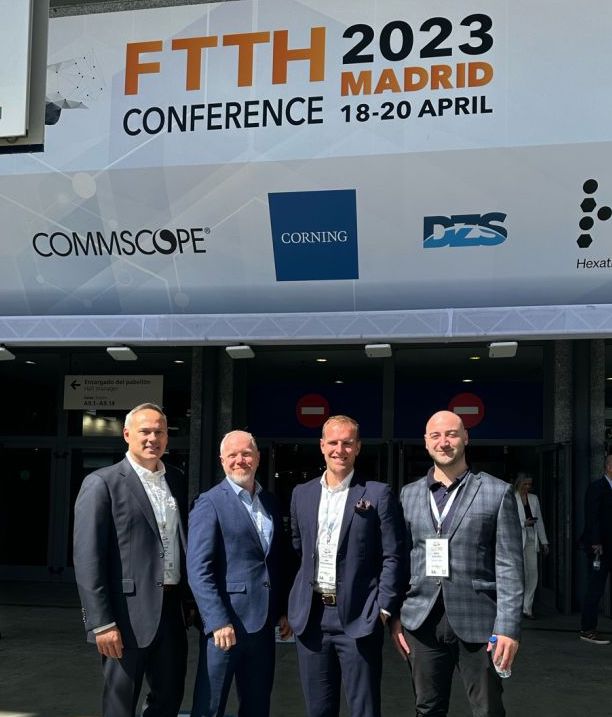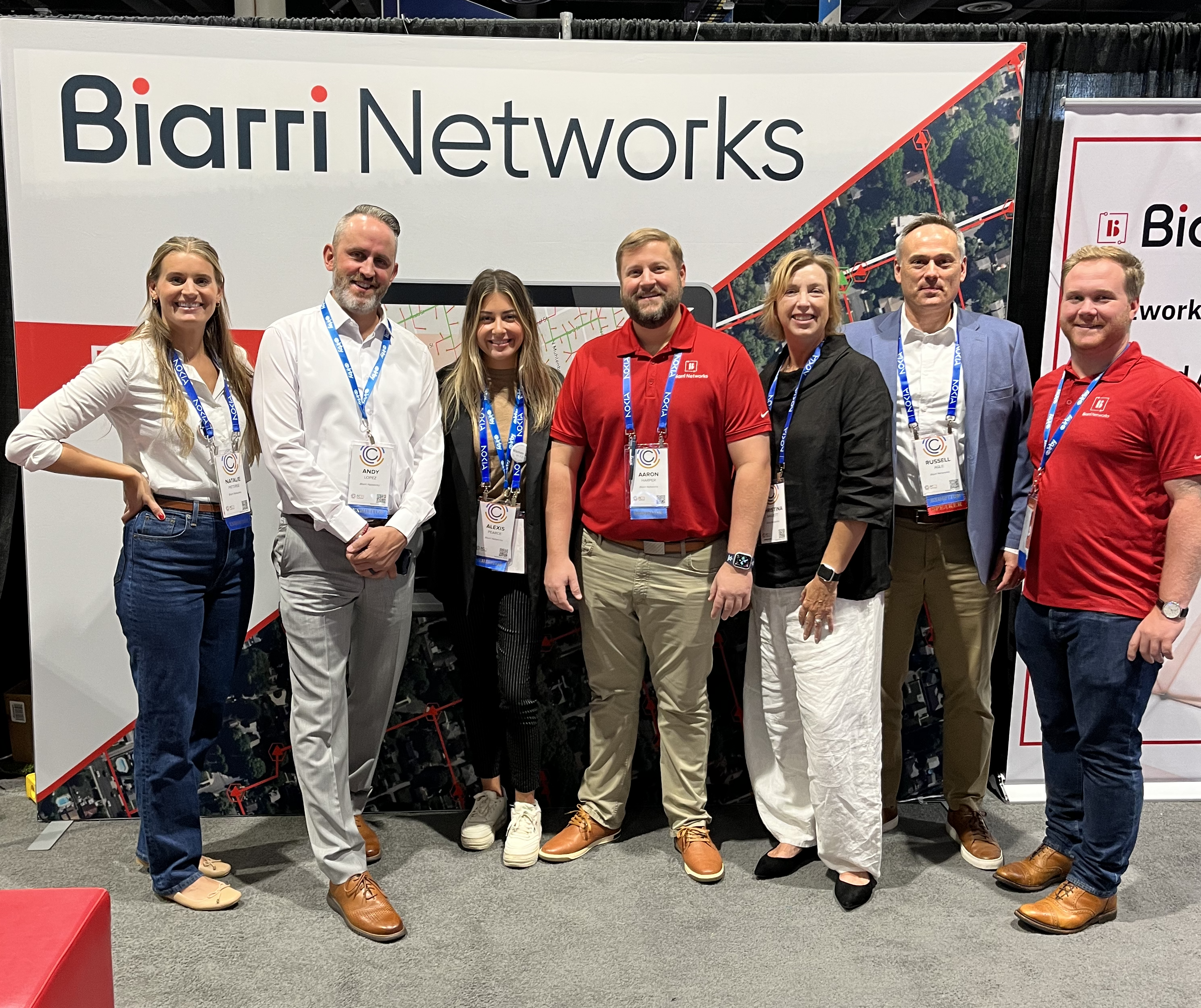Insights: Fiber Connect 2023
Our team had the pleasure of exhibiting at this year's Fiber Connect conference held in the beautiful Gaylord Palms Resort & Convention Center in...
3 min read
 John Iannello
:
May 3, 2023 9:55:26 AM
John Iannello
:
May 3, 2023 9:55:26 AM

The UK & EMEA team recently hit the road in a big way, attending two of Europe’s largest fibre industry conferences in two countries across four days. We headed to Manchester, England for Connected North on April 17-18 before flying to Madrid, Spain for the FTTH Council Europe’s annual conference on April 18-20. With 1500+ and 3500+ attendees respectively, the conferences presented a great opportunity for us to connect with others in the industry and educate ourselves further about what’s happening in the UK and European markets.
After attending the first ever Connected North in 2022, it was great to return to Manchester and see that the show had grown significantly this year. It featured roughly three times as many attendees, a much larger exhibition floor, and an agenda packed with relevant and informative workshop sessions. The 2023 FTTH Council Europe conference in Madrid mirrored 2022’s Vienna show in size, albeit with a slightly more spacious venue. What was clear at both events was that whilst great progress has been made in the UK and EU39, several countries still have a long way to go if the target of having a fully fibred continent by 2030 is to be met.
Driven by UK Government targets of 85% fibre availability by 2025 and 100% by 2030, significant investment has poured into the telecommunications market in the last few years from a range of sources as 150+ operators threw their hats into the race for duct space. This resulted in the UK connecting 4.2 million households with fibre in the 12 months leading up to September 2022, the largest growth of any European country[1].
The FTTH Market Panorama panel session in Madrid gave great insight into the progress that has been made over the last 12 months. Among the EU39 countries, 219 million premises have now been passed with fibre, growing 5.3% in 2022, but subscriber take rates were hovering around 50%, seeing a modest 1% increase YoY. Whilst both Germany and the UK appear in the top-5 list for fastest growing FTTH networks across the EU39 countries, they are still the two with the most work to be done - to the extent that there was a dedicated panel session on the agenda for each market, delving into why they were lagging behind. Panelists from both sessions gave impassioned speeches about the issues hampering their progress, oftentimes citing the need for policy change to enable the necessary growth of their respective countries’ fibre infrastructure. With an estimated 17 million households lacking fibre connectivity in the UK and 33 million in Germany, there’s a lot of work left to be done to connect all homes by 2030.
Some common themes played out across both conferences - recent shifts in the financial landscape are clearly driving investors in the UK and Europe to demand better returns before funding for further network rollouts is released. All panelists agreed and common-sense decrees that significant overbuild is unsustainable for businesses and despite this, it is rife in the UK (although currently appears less prevalent across mainland Europe). Many of the financially-attractive towns and cities have been built out by multiple ISPs, but market penetration is a zero-sum game and the results so far have seen less-than-expected take-up rates, at least for some alt-nets.
Competition isn’t the only contributing factor - an unquantifiable amount of time, effort and money across this industry is sunk into remedying inaccurate data, unusable infrastructure, and working around permitting and wayleave restrictions. Not to mention the well-documented shortage of necessary, skilled resources. All of this translates to delays in getting customers connected – if they’re able to be connected at all – and consequently lower return on investment for all participants in the project lifecycle. In the current climate, this could likely further impact the time it takes for the next wave of investments to be released into the market, something that the 58% of UK households still waiting on their fibre connection[1] can ill afford.
There is also a risk that as the talk of consolidation in the market progresses to action, industry players of all sizes may experience impacts to their construction schedules as they deal with the inevitable distractions created by the need to integrate systems, processes and architectures with their new partner companies. It may be good for the industry in the long term, but there are likely to be short-term impacts which, should they eventuate, will unfortunately further delay customer connections.
Conversations on the conference floors and in the workshop sessions reflected these sentiments, and we’re starting to see investors shift their operators’ focus towards introducing efficiency into their deployment processes. This strategy is ultimately driven by the cost of financing and a need to see a return on their investments by minimising costs (both in deployment, and for future operation and maintenance of the network) and reducing time-to-market, whilst still working towards achieving targets for households passed and take-up.
At Biarri Networks, we’re lucky to work alongside several likeminded companies bringing innovation to our industry, each supplying technologically advanced products and services that span the entirety of a project lifecycle and bring genuine efficiency gains. Should operators be bold enough to engage them, there are readily accessible solutions for data collection, network design, field survey, construction management and network inventory management & operation, to name a few. For over a decade, Biarri Networks has challenged traditional planning and design methodologies and our customers – along with their investors – have welcomed the reduction in network build costs, a quicker time to build, and the subsequent reduced operational costs that are the typical outcomes from our automated and algorithmic-based approach. If you would like to explore how partnering with Biarri could support your FTTX planning and design ambitions, reduce your costs, and help you activate customers sooner, anywhere in the world, please reach out to us.

Our team had the pleasure of exhibiting at this year's Fiber Connect conference held in the beautiful Gaylord Palms Resort & Convention Center in...

Momentum, momentum, momentum! What a show it was.

As a product manager, I love solving my customer’s problems. So it’s always tempting to try and keep developing our product at Biarri Networks to...